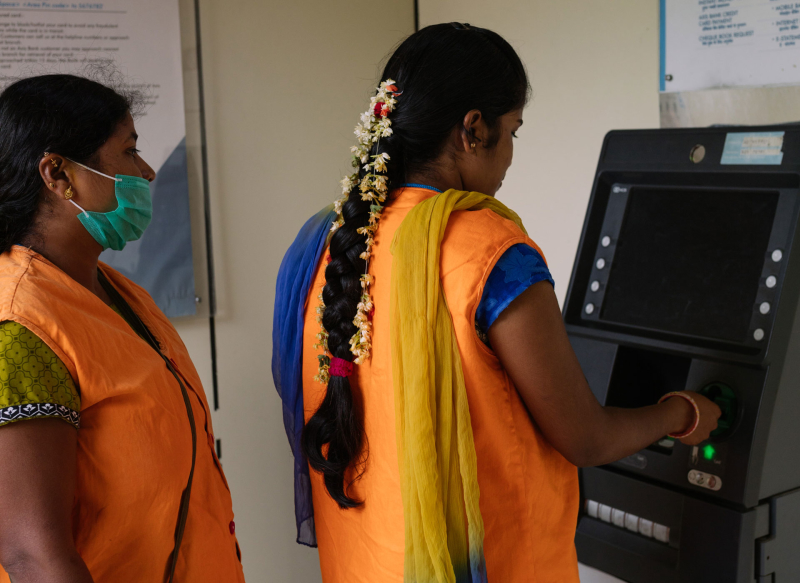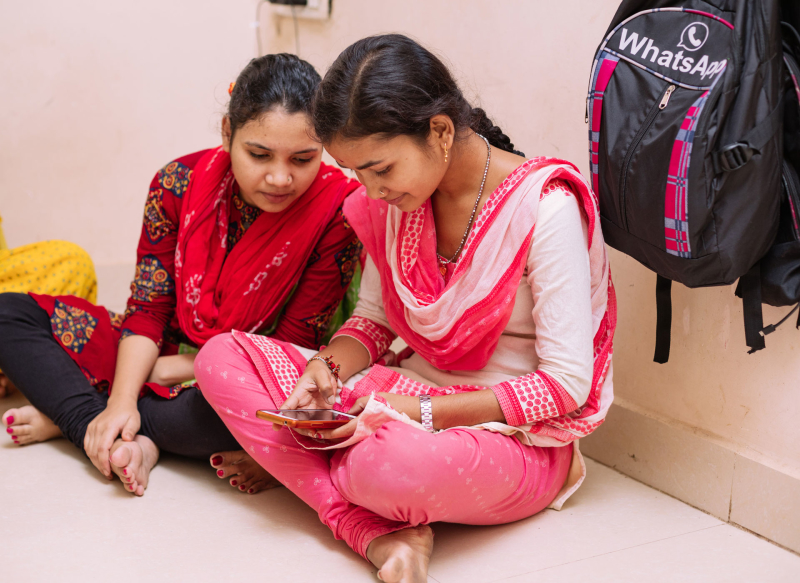FOCUS AREA
IMPROVING WORK ENVIRONMENT
LOCATION
Bangalore, Karnataka
REACH
19 migrant hostels, 1400 women
PARTNERS
University of Michigan, Shahi Exports, IDinsight
STAGE
- DESIGN
- EVALUATE
- ANALYZE
- DISSEMINATE
- SCALE-UP
Empowering Women With Digital Finance
CHALLENGES AND OPPORTUNITIES
Women migrant workers tend to send a substantial portion of their wages home. In an initial survey we conducted across migrant hostels, a majority of the women sent remittances but:
- 37% did not know they could use their mobile phones to do so.
- Even though over half knew about digital methods, 90% of them lacked the knowledge on how to use them.
- Only 5% of all women used digital payment methods.
- Most used third-party routes that came at a financial cost or by withdrawing cash and entrusting it to someone they know which comes at the cost of time.
Even though many women were aware of digital applications that could remove both financial and time costs, they refrained from using mobile platforms due to a lack of trust and/or technological knowledge. It was in this context that, along with the global research organization IDinsight and the Indian garment firm Shahi Exports Inc., we introduced training sessions to women migrant workers on digital payment processes.
RESEARCH QUESTION
If workers are provided training for digital payment, do they start using these methods to send money home? How does this affect their overall financial behaviors?
RESEARCH DESIGN
We designed a randomized controlled trial to test the effect of training intervention sessions in digital payment applications on remittances and financial behavior. We tested two different models of training to understand the intensity of support that was needed: a cheaper, classroom-based model, and a more intensive but costlier individualized-training model. During each training session, we collected data on participant success at different points in the process of sending money. Within two days of the training session, participants were sent a message with a video reviewing the steps for using the digital payment application. We sent another message to participants just before they received their next salary, which included the same video and a reminder to use digital payment applications to remit money.
FINDINGS AND IMPLICATIONS
- The classroom training increased the uptake of digital applications by 5%.
- Individual learning had a higher impact, with uptake increasing by 10%.
Despite addressing the knowledge barrier, digital payment methods continued to see low usage. This is largely due to the infrastructure requirements, such as the sender or receiver’s banking information, smartphone or data connectivity, for setting up digital finance technology.



